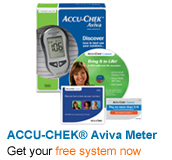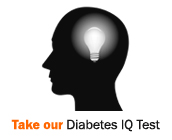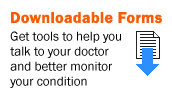| NYC Resources | 311 | Office of the Mayor |
|
|
||||||

 | ||
|
| ||
Do you know the following ABCs when it comes to controlling your diabetes?
Download this form to help you monitor your ABCs. What is an A1C? The A1C test ordered by your physician shows your average blood glucose level over the past 2-3 months. What is blood pressure? Blood is carried from the heart to all parts of your body in vessels called arteries. Blood pressure is the force of the blood pushing against the walls of the arteries. Each time the heart beats (about 60-70 times a minute at rest), it pumps out blood into the arteries. Your blood pressure is at its highest when the heart beats, pumping the blood. This is called systolic pressure. When the heart is at rest, between beats, your blood pressure falls. This is the diastolic pressure. Blood pressure is always given as these two numbers, the systolic and diastolic pressures. Both are important. Usually they are written one above or before the other, such as 120/80 mmHg. The top number is the systolic and the bottom the diastolic. When the two measurements are written down, the systolic pressure is the first or top number, and the diastolic pressure is the second or bottom number (for example, 120/80). If your blood pressure is 120/80, you say that it is "120 over 80." Blood pressure changes during the day. It is lowest as you sleep and rises when you get up. It also can rise when you are excited, nervous, or active. Still, for most of your waking hours, your blood pressure stays pretty much the same when you are sitting or standing still. That level should be lower than 120/80. When the level stays high, 140/90 or higher, you have high blood pressure. With high blood pressure, the heart works harder, your arteries take a beating, and your chances of a stroke, heart attack, and kidney problems are greater. What is cholesterol/LDL? Cholesterol is a lipid, a type of fat found in the body. Having high "bad" cholesterol means you have too much LDL in your blood. LDL is low-density lipoprotein, or "bad" cholesterol. Too much cholesterol in the blood, or high cholesterol, can be serious. People with high cholesterol are at risk of getting heart disease. This can lead to a heart attack or stroke. Only about 20% of cholesterol comes from the foods you eat. The other 80% is made by your body. Things such as age and family health history affect how much cholesterol your body makes. Cholesterol levels tend to rise as you get older. Unfortunately, there are usually no signs that you have high cholesterol. But it can be detected with a blood test. These tests can also help your doctor predict what your risk for heart disease may be. What should my target glucose levels be?
Use these target blood glucose levels to know how well controlled your blood sugar is when doing fingerstick testing. | ||
|
|
|
|
 |
| Copyright 2014 The City of New York | Contact Us | Privacy Policy | Terms of Use |




